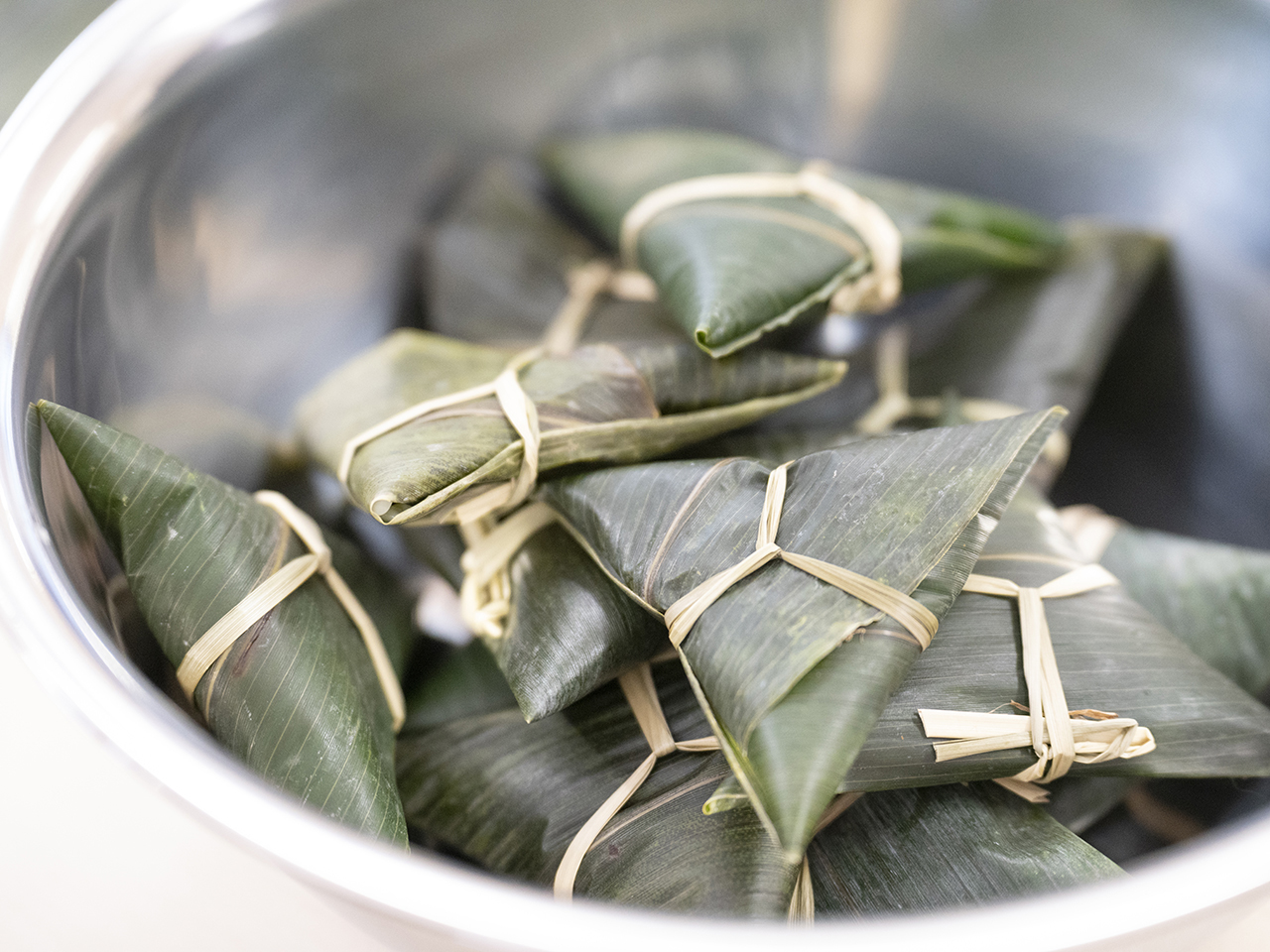
Tsuruoka’s Traditional Sweet: “Sasamaki”
A Beloved Confectionery Rooted in Tradition
Tsuruoka City in Yamagata Prefecture, recognized as a UNESCO Creative City of Gastronomy, is a hub of culinary excellence. Among its many traditional foods is Sasamaki (笹巻), a sweet with over 230 years of history. Sasamaki, made by wrapping glutinous rice in bamboo leaves and boiling it, has long been a festive dish for Tango no Sekku (端午の節句 Boys’ Festival) on May 5. While “chimaki (ちまき)” is commonly enjoyed nationwide, in Tsuruoka, the tradition is to celebrate with Sasamaki. Today, it is also enjoyed year-round as a beloved traditional sweet.
In the Shonai region, the method of making Sasamaki varies by area. In southern Shonai, where Tsuruoka is located, the predominant style involves using lye to produce yellow Sasamaki. In contrast, northern Shonai, including Sakata City, features white Sasamaki made without lye.
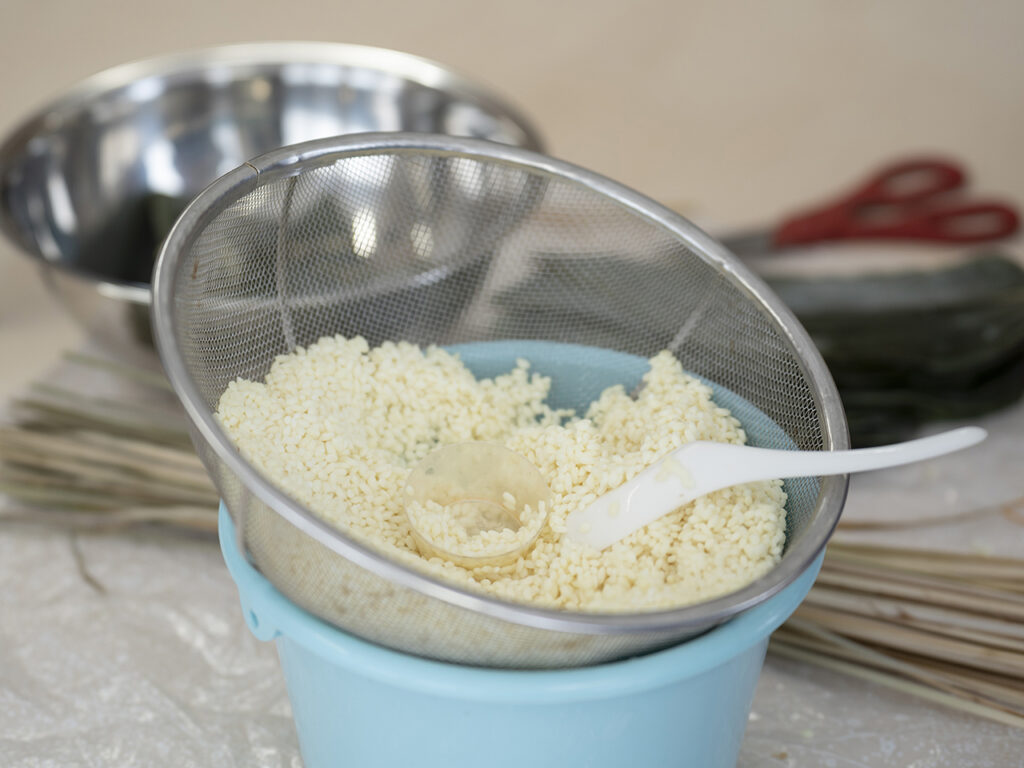
The lush natural environment of Tsuruoka, where firewood was once a common fuel, made wood ash readily available. This ash, known as lye, is strongly alkaline with antibacterial and preservative properties. The lye water, derived by soaking the ash in water and skimming the surface liquid, enhances the preservation of Sasamaki, leading to the saying: “The quality of Sasamaki depends on the lye.” Around the Boys’ Festival season, lye water is even sold at local farmers’ markets.
Tsuruoka’s traditional confectionery tochimochi (とちもち) also utilizes lye for removing bitterness from horse chestnuts, making Sasamaki and tochimochi iconic examples of Tsuruoka’s unique lye culture.
| Learn more about Tochimochi | TSURUOKA Creative City of Gastronomy | Traditional Confections |
| Youtube | Tsuruoka City’s Traditional Confection Tochi Mochi |
How to Make Sasamaki
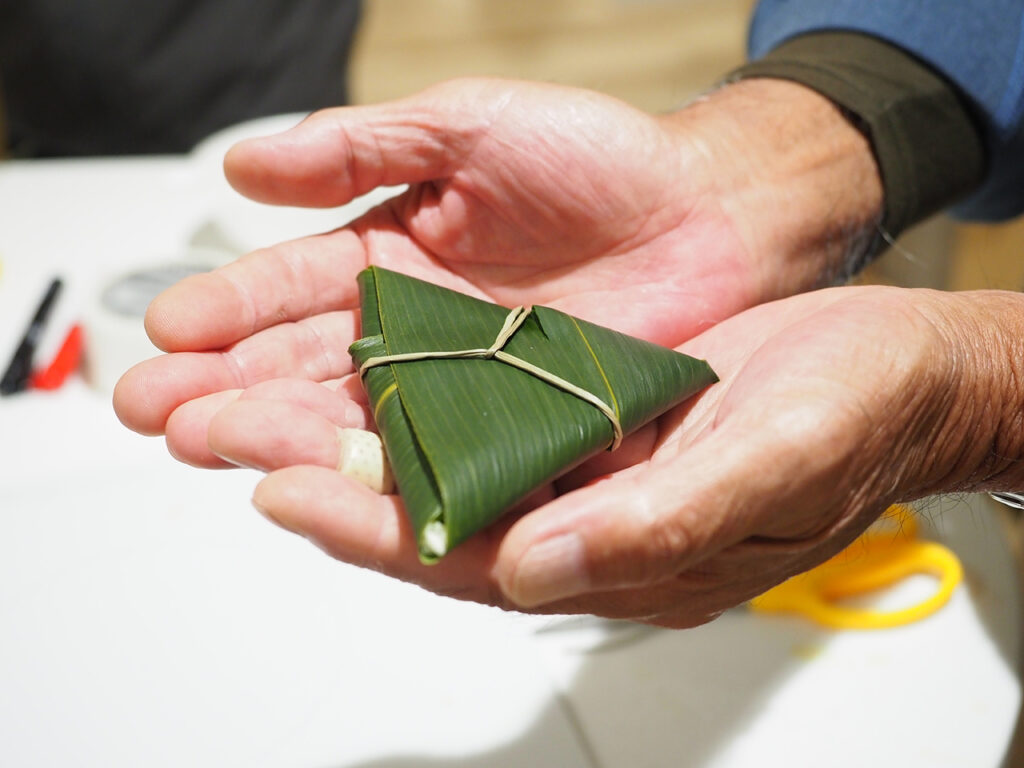
Preparing the Rice: Soak the glutinous rice in lye water overnight. Wrapping in Bamboo Leaves: Drain the rice and wrap it in bamboo leaves, securing it tightly with natural twine such as suge or igusa.
Boiling: Place the wrapped Sasamaki in a pot and boil it in water.
Cooling: After boiling, transfer the Sasamaki to cold water and rinse several times to cool.
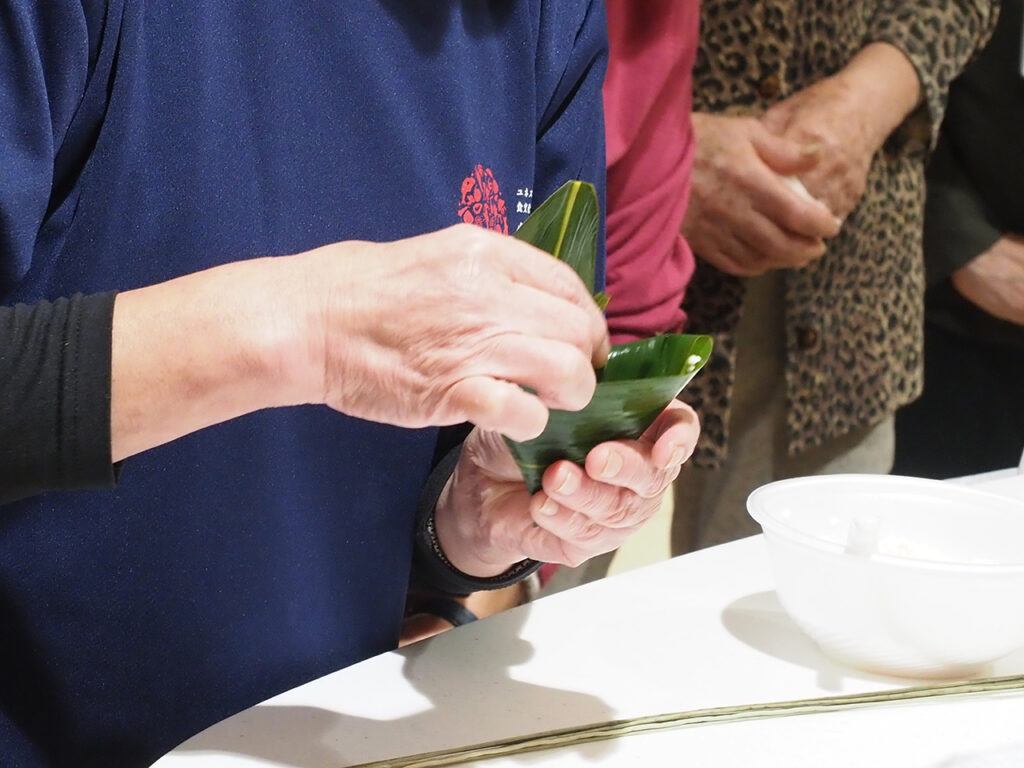
The wrapping style varies by region and family, including the triangular “sankaku-maki,” the fist-like “kobushi-maki,” and the pointed “tsuno-maki.” For celebrations, large Sasamaki using dozens of leaves, known as “takenoko-maki,” are also made.
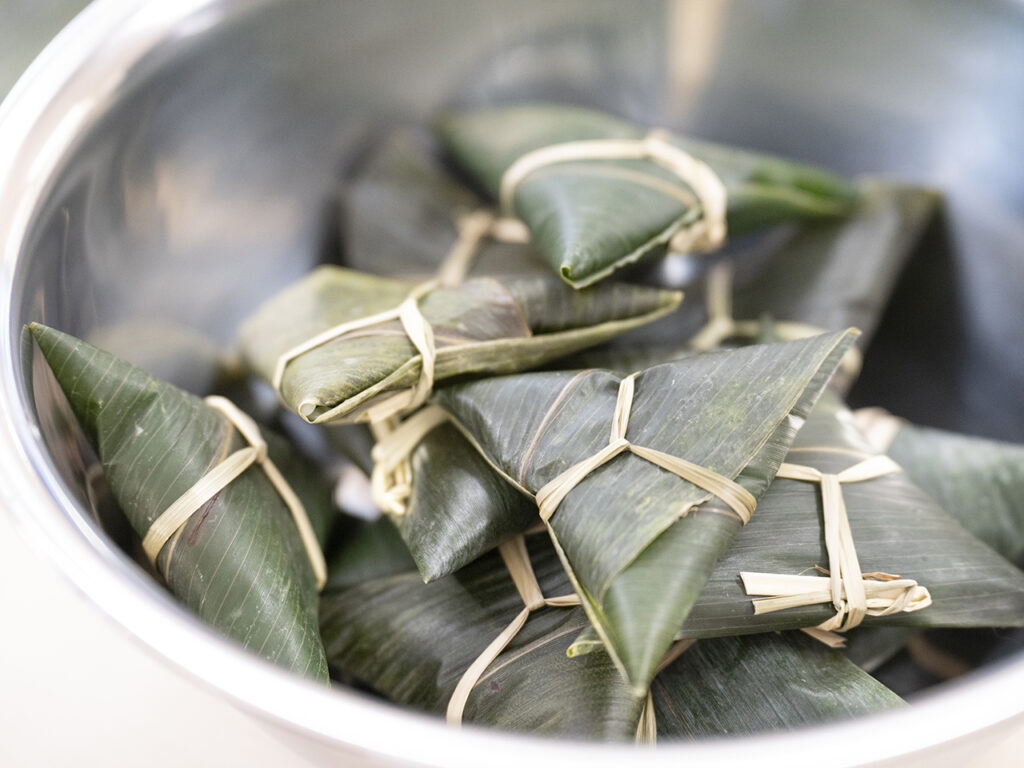
The bamboo leaves used to wrap the glutinous rice have traditionally been considered best when harvested during the “Doyo” period. Doyo is a traditional term in the Japanese calendar referring to intercalary periods that occur four times a year—before each of the seasons: spring, summer, autumn, and winter. Therefore, during the height of summer, from late July to early August, they harvest enough bamboo leaves to last for the entire year.
While bamboo leaves were traditionally dried for preservation, modern methods include boiling them with baking soda to maintain a vivid green color and then freezing them for long-term storage. During the Boys’ Festival season, bamboo leaves are also sold at local markets in Tsuruoka.
Enjoying Sasamaki
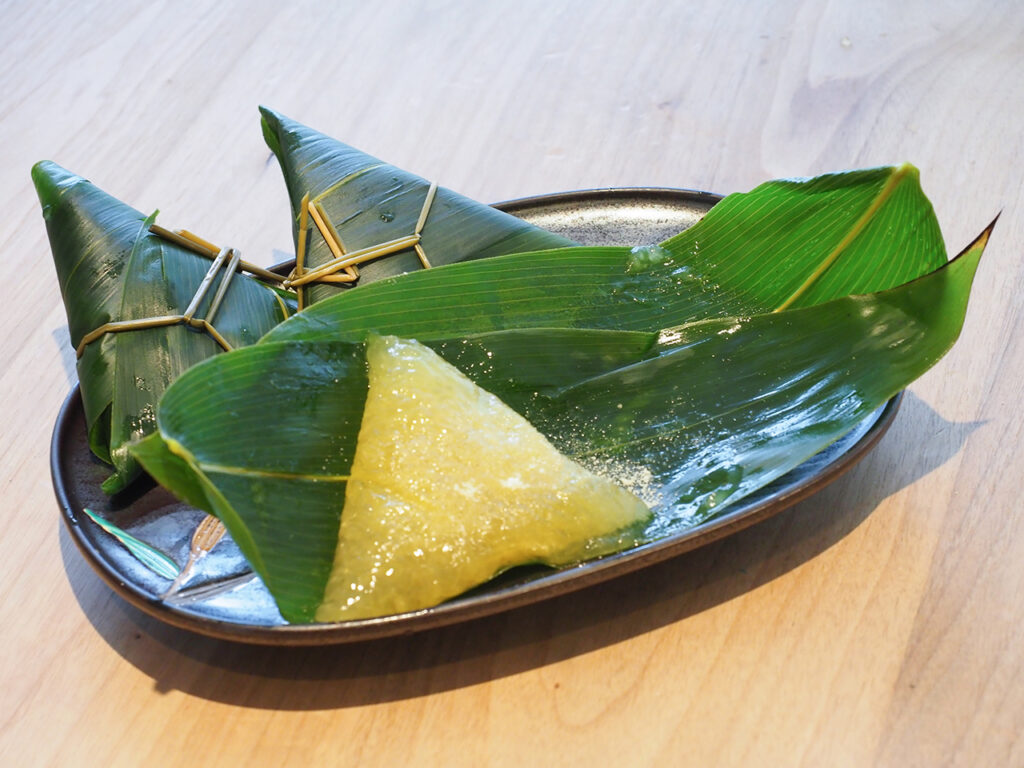
When unwrapped, Sasamaki reveals a glistening yellow, jelly-like texture. It’s typically enjoyed with kuromitsu (black syrup) and kinako (roasted soybean flour). In Tsuruoka, ao-kinako made from green soybeans is commonly used, enhancing the flavor with its bright green hue.
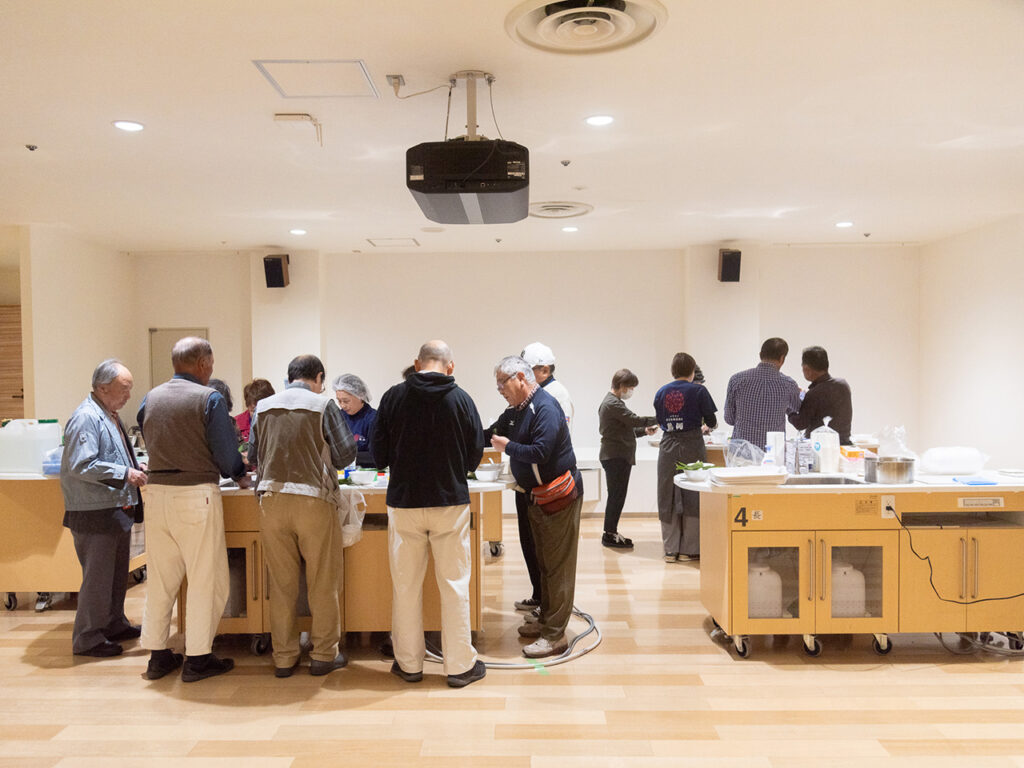
Sasamaki, once a festive food, is now a nostalgic local treat deeply loved by the community. To preserve its tradition, workshops teaching Sasamaki-making are actively held in Tsuruoka. Sasamaki can also be purchased at local supermarkets and specialty stores, making it a great souvenir for visitors. Be sure to give it a try!
Preserving Tradition for Future Generations
Sasamaki, with its long history and deep roots in regional culture, was recognized as a “100-Year Food” by the Agency for Cultural Affairs in March 2023. Furthermore, in March 2024, the Shonai Sasamaki Production Techniques were registered as a National Intangible Folk Cultural Property. These honors underscore Sasamaki’s value not just as a confectionery with a long history but as a symbol of culinary culture passed down through generations in the region.
Through Sasamaki, the wisdom of Tsuruoka and Shonai’s people, as well as the local environment and lifestyle, continues to be shared in modern times. As a cultural emblem, Sasamaki is expected to inspire pride in the community and remain a treasured tradition for future generations.
